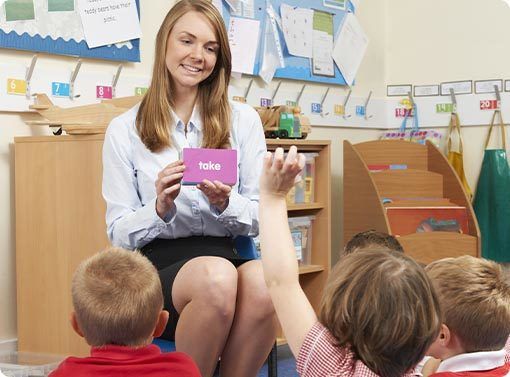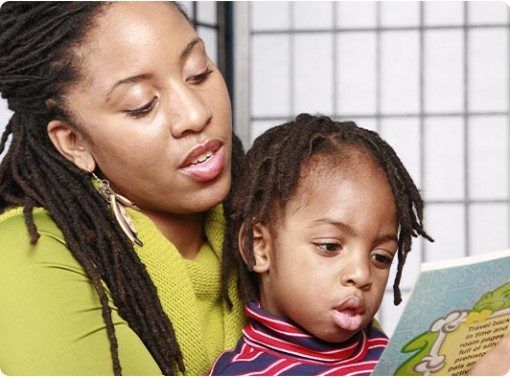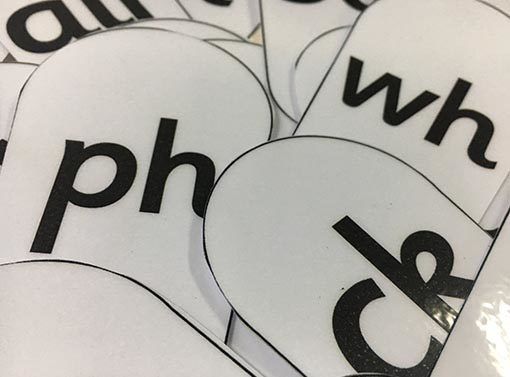Phonics — A Quick Guide
There is a wealth of information out there regarding phonics, which can be overwhelming, so we have collated some FAQ answers on the subject below.
Jump to:
- What is Phonics?
- How is phonics taught in schools? or What is the best way to teach phonics?
- What is Letters and Sounds?
- What are the Letters and Sounds phases?
- What are the best books for teaching phonics?
- Which sounds are included in which phonic books?
- How can parents support their child’s phonic learning at home?
- What are the requirements of the Ofsted Reading Deep Dive in relation to Phonics?
- Can you use book bands with phonics?
- Are there books that support phonic learning in Key Stage 2?
- Are there phonics books that support learning additional vocabulary?
Technical Terms
- What is a phoneme?
- What is a grapheme?
- What is a digraph?
- What is a trigraph?
- What is a quadgraph?
- What is a split digraph?
- What are adjacent consonants?
- What are consonant and vowel digraphs?
- What is segmenting?
- What is ‘blending’? (alternatively known as ‘synthesising’)
- What are tricky words?
- What are high-frequency words?
What is Phonics?
Phonics is a way of teaching children to read and write which focuses on units of sound. These units of sound are correlated with written letters or groups of letters and used as building blocks to form words. There are 44 phonics sounds, and each sound is called a ‘phoneme’, with its written representation known as a ‘grapheme’.
There are a few ways of teaching phonics but synthetic phonics is the most widely used and is taught throughout primary schools in England. The principle behind synthetic phonics is that establishing a solid familiarity with the 44 phonics sounds will allow children to recognise the building blocks of a word, even if it is unfamiliar as a whole, therefore allowing them to put the blocks together in a practice known as ‘blending’. This process relies heavily on the correct and consistent pronunciation of each phonics sound.
How is phonics taught in schools? or What is the best way to teach phonics?
Schools in England teach synthetic phonics as specified by National Curriculum guidelines. The Educational Endowment Fund (EEF) considers phonics as the most secure and best-evidenced areas of pedagogy * and that synthetic phonics taught systematically, is the best way to teach reading. This is because it provides children with a universal knowledge of the units of sound that form all words, as well as the tools to recognise how these units are put together. This equips them with a blueprint for decoding unfamiliar words and therefore allows them to explore independent reading as early as possible. The new Reading Framework (July 2021) outlines that ‘the effective teaching of reading, as evidenced in these schools, requires not just a systematic synthetic phonics programme but its consistent implementation in every class’.
There is a range of commercially available Systematic Synthetic Phonics (SSP) teaching programmes that have been validated as effective by the Department of Education (DfE). The list of validated SSP’s can be found here. Alternatively, schools can use their own programme as long as “schools take an approach that is rigorous, systematic, used with fidelity (any resources used should exactly match the Grapheme Phoneme Correspondence (GPC) progression of their chosen SSP approach), and achieves strong results for all pupils, including the most disadvantaged.” (Gov.uk Education hub blog May 2021)
*Reading Framework (July 2021)
What is Letters and Sounds?
Letters and Sounds is a systematic approach to teaching phonics, which has been promoted by the Department for Education and used by many schools in the UK — although it is not a National Curriculum requirement it can form a foundation for your school’s approach to systematic synthetic phonics which will also include classroom work as well as reading books. It is broken down into six phases, covering learning from ages 3–7, by which point the aim is for children to be fluent readers. The DfE recently had this to say about the programme:
“The 2007 Letters and Sounds handbook, published under the previous Government, has never been a full Systematic Synthetic Phonics (SSP) programme. For a number of years, effective teaching using Letters and Sounds has relied on schools themselves building a programme around the handbook.”
Some schools have done this very successfully, and it was for this reason that schools achieving outstanding results using 2007 Letters and Sounds were included in the English Hubs programme in 2018.
However, the DfE have also said that “for many schools, especially those who need or want to improve their practice, 2007 Letters and Sounds is not fit for purpose and does not provide the support, guidance, resources or training needed.” In other words, Letters and Sounds in its current original form is deemed not to be a full SSP programme. For a list of validated SSP Programmes (some of which will be based broadly on Letters and Sounds click here)
What are the Letters and Sounds phases?
A summary of the phases is as follows:
Phase 1 (age 3–4, Nursery/Reception): strong focus on sounds, including listening, speaking and repeating, as well as a starting to link sounds to letters.
Phase 2 (age 4–5, Reception): linking of sounds to letters increases. Children are encouraged to sound out and blend simple words. Tricky words (also known as common exception words) begin to be introduced.
Phase 3 (age 4–5, Reception): further building on the linking of sounds to letters. Consonant digraphs are introduced (e.g ‘ch’) as well as longer vowel sounds (e.g ‘ai’)
Phase 4 (age 4–5, Reception): existing knowledge is consolidated and words with adjacent consonants are introduced such as ‘trap’ and ‘milk’.
Phase 5 (age 5–6, Year 1): alternative pronunciations for certain graphemes are addressed (e.g ‘cow’ and ‘blow’), as well as alternative spellings for some known phonemes (e.g ‘igh’, ‘ie’ and ‘y’).
Phase 6 (age 6–7, Year 2): Schools should be following the spelling curriculum as set out in the National Curriculum in Year 2. Any child in Year 2 who did not pass the Phonics Screening Check in in Year 1, or is not fully fluent in reading words with the Phase 5 GPC’s should continue to be taught phonics daily.
An example of a more detailed summary can be found here
What are the best books for teaching phonics?
While this is subjective and a matter for schools to decide, you may wish to consult the Department of Education list of validated systematic synthetics phonics teaching programmes here. We've collated mapping & supporting documents from publishers of phonics resources to help you easily compare what is available and potentially help to identify which books in your existing provision will fit into a commercially available Systematic Synthetic Phonics Teaching Programme (SSP) or your own school’s SSP. If you are auditing your resources, you may need to top up with additional books to ensure your provision fits with the new phasing and these phonics mapping and support documents should help with this.
Do also review our blog DfE Changes to Synthetic Systematic Phonics for a more detailed understanding of the recent changes.
Which sounds are included in which phonic books?
We've collated mapping & supporting documents from a range of leading publishers of phonics resources to help you easily compare what is available and potentially help to identify which books in your existing provision will fit into a commercially available Systematic Synthetic Phonics Teaching Programme (SSP) or your own school’s SSP. This includes information on which sounds are in which individual books. If you are auditing your resources, you may need to top up with additional books to ensure your provision fits with the new phasing and these phonics mapping and support documents should help with this.
How can parents support their child’s phonic learning at home?
The best thing for parents to do is to read, read, read with their child, even if the child isn’t doing the reading themselves. The act of reading a story with them will help to foster an enjoyment and familiarity with sounding out words that can only be beneficial when it comes to learning the principles of phonics at school.
It is also important that when discussing phonics sounds at home that the correct pronunciations are used consistently. This is more difficult than it might seem, as most parents did not grow up learning the phonics system. The useful video below shows how to pronounce the phonics sounds. A table of the phonics graphemes could also be printed and left up around the house to make them easier to reference spontaneously.
Other useful tips can be found here under ‘How can I help at home?’
What are the requirements of the Ofsted Reading Deep Dive in relation to Phonics?
Comprehensive information on this can be found in our article Preparing for the Ofsted Reading Deep Dive (Currently being updated to bring into line with the new Reading Framework)
Can you use book bands with phonics?
The new DfE Guidance specifies that schools need to be following a teaching programme based on an SSP programme by Spring 2022. These have books that follow the teaching sequence exactly so children are not expected to read unfamiliar sounds. Banded books should ideally then be used once children have either completed their phonic learning or as additional practice for reading depth and comprehension when reading with an adult. Ideally, phonics books will follow the same progression as the teaching sequence (which may or may not be based on Letters and Sounds) and historically a book bands approach and phonics approach have not been compatible per se. Some publishers have been using a best-fit approach to match the phases of Letters and Sounds and book bands as this makes it easier for schools who are using the book bands system, but for a rigorous approach, you may want to choose a scheme that follows phases.
Are there books that support phonic learning in Key Stage 2?
Phonic Books have a range to help struggling Key Stage 2 readers catch up on the phonics principles that have previously eluded them. This series serves to ‘plug the gaps' in any knowledge and offer the opportunity for a bit more practice where it is needed. But a factor of key importance is that the books are engaging and age-appropriate for a Key Stage 2 reader, in order that they feel a sense of progression and do not become disheartened or stagnate. The books include a practice page at the start to familiarise the reader with specific sounds and common words before they begin, ensuring as confident a start as possible.
A link to this series can be found here
Big Cat Letters and Sounds for 7+ and Oxford's Project X CODE also offer phonics intervention schemes for children in Key Stage 2 with age-appropriate illustrations, subject matter and a systematic approach to phonics with a number of different entry and exit points to ensure children get support at the right level for them.
Are there phonics books that support learning additional vocabulary?
The Oxford Reading Tree: Word Sparks series supports learning additional vocabulary. Fully matched to the Letters and Sounds Phases, children will not only learn new vocabulary but develop their decoding skills, as well as fluency of reading and comprehension. Each pack contains:
- four partner books containing parallel texts, of which one is read by the child and one by the supporting adult, designed to generate discussion and further develop vocabulary
- four books for children to read to an adult which include word boxes to prompt discussion and introduce more ambitious vocabulary
- notes on the inside covers as well as a list of grapheme-phoneme correspondence
- common words printed on the back cover to aid the selection of a book at the most appropriate level for the child’s phonics learning.
A link to this series can be found here
Technical Terms
What is a phoneme?
A unit of sound that can be combined with other units to form a word.
What is a grapheme?
A written letter or combination of letters that represent a phoneme. This can be one to four letters long.
What is a digraph?
A two-letter grapheme that represents one phoneme, for example ‘sh’, ‘ch’, ‘ee’, ‘or’.
What is a trigraph?
A three-letter grapheme that represents one phoneme, for example ‘igh’, ‘dge’, ‘ear’.
What is a quadgraph?
A four-letter grapheme that represents one phoneme, for example ‘eigh’, ‘ough’.
What is a split digraph?
A digraph that is split in half with an extra consonant in the middle, for example ‘a-e’ (take), ‘o-e’ (mode), ‘i-e’ (time).
What are adjacent consonants?
Consonants that appear next to each other in a word but represent different sounds. While some pairs of consonants are digraphs, these are instead two single graphemes. For example, the letters ‘g’ and ‘r’ in ‘grab’ form two separate sounds, as do the letters ‘n’ and ‘d’ in ‘hand’. Adjacent consonants can also appear in threes such as in the word ‘string’ where they are aptly known as a ‘consonant string’
What are consonant and vowel digraphs?
A digraph is made up of two letters. These letters can either be two consonants, such as ‘ck’, two vowels, such as ‘oo’, or a vowel and a consonant, such as ‘ow’.
What is segmenting?
The act of breaking a word down into separate phonemes, sounding them out and identifying the corresponding graphemes, for example: qu-a-ck.
What is ‘blending’? (alternatively known as ‘synthesising’)
The practice of recognising and putting together individual component sounds in order to form a complete word.
What are tricky words?
Words that are difficult to segment because some of their phonemes and graphemes do not match each other, for example ‘the’, ‘was’, ‘said’. As they can’t be decoded using the normal phonics method, children need to learn to recognise these on sight.
What are high-frequency words?
The most common words used in our language, many of which are also tricky words. Many teachers believe that a familiarity with these words is the key to unlocking the reading journey.
Pandora Books Scheme Shop
Bug Club Phonics SSP (DfE Validated)
Bug Club, Pearson’s outstanding whole-school reading programme for Primary aged children, supports and encourages children to catch the reading bug for life!
Bug Club Phonics books are nicely aligned to Phases 2–5 of Letters and Sounds and offer varied, engaging and fun books to support children learning to decode and enjoy reading. Books are not stilted and introduce the phonemes and graphemes systematically providing valuable experiences and opportunities to practise and build on the phonics taught in class. These bright and colourful books include inside cover notes and tips on how to share books effectively, identifying the phonics focus and possible extension activities.
Big Cat Phonics for Little Wandle Letters and Sounds Revised SSP (DfE Validated)
Big Cat Phonics for Little Wandle Letters and Sounds Revised has been developed in collaboration with two English Hubs, Wandle Learning Trust and Little Sutton Primary School. It comprises classroom resources to support the Little Wandle Letters and Sounds Revised SSP and a range of phonic readers that together provide a consistent and highly effective approach to teaching phonics.
Big Cat Phonics for Letters and Sounds
Big Cat’s new Phonics for Letters and Sounds is a series of beautifully presented books fully aligned to Letters and Sounds and is banded from Lilac to Turquoise. Pupils can enjoy engaging stories and explore exciting non-fiction topics that are perfectly matched to classroom learning. Reading notes help parents reading at home, providing clear and simple learning objectives as well as phonic practice and vocabulary extension activities. For smaller schools, Set 1 is an ideal place to start, either with or without the teacher books, but if you are looking for more breadth within each colour band, you may wish to add Sets 2 and 3 or purchase individual colour bands.
Floppy's Phonics Teaching Programme (DfE Validated)
A rigorous, easy to use synthetic phonics teaching programme that engages children from the outset and enables them to learn to read quickly. Fully decodable books offer children reading practice that’s matched to their phonic knowledge. These colourful and engaging books use the popular Oxford Reading Tree characters and action-packed illustrations to make learning phonics fun. Developed with Debbie Hepplewhite MBE, a prolific author, trainer and advisor on synthetic phonics.
Floppy's Phonics Fiction (DfE Validated)
Floppy's Phonics Fiction books are matched to the systematic teaching of Letters and Sounds and provide opportunities for children to practise reading and decoding words at the same pace as the phonics teaching and learning they are receiving in the classroom. These beautifully presented books have been endorsed by the leading phonics expert and advisor to the DfE on Letters and Sounds, Debbie Hepplewhite MBE. Perfect for taking home, the inside covers include plenty of tips and notes to help parents support their children. The notes include, Before Reading: Talk together, Say the Sounds, Sound the words, Read these words together (difficult words at this stage); After Reading and How to blend. These fiction books feature the mad-cap adventures and superb illustrations of the brilliant Oxford Reading Tree characters and are suitable for Reception and Year 1 classes. Floppy's Phonics Fiction books are outstanding books covering Phases 2—5 of Letters and Sounds and book band levels Pink to Orange (Oxford Levels 1+ to 6).
These superb collections of phonic-based reading books have been organised in packs aligned to the structured phases of phonic learning as outlined in Letters and Sounds. Great decodable books for children practising their reading skills with an adult, these are skillfully written books from top educational publishers. With a colourful array of different styles and genres, these books will be loved by children practising their reading skills. Every Mixed Phonics Box includes a handy storage box with a sticker denoting its phase and each title is covered in a free, easy to clean protective jacket.
For schools who wish to follow and embed book bands right from the very start, our Mixed Phonics Banded Boxes feature a wonderful assortment of decodable reading books. The Pink to Orange bands perfectly deliver the opportunity to practise phonic learning with the support of an adult, and children will respond enthusiastically to the variety of book styles which will keep interest high at this crucial stage of reading development. A handy colour-coded storage box is included and every title is covered in a free, easy to clean protective jacket.
Phonic Books: Catch Up Phonics for KS2
Phonic Books are specialists in writing and publishing books to help struggling older readers catch up with phonics and read with fluency and comprehension. The books are written by expert reading specialists with a view to filling in the gaps in phonic skills that are a barrier to children’s reading progress. For pupils who have experienced reading difficulties and failure, many of whom will struggle with self-esteem and confidence, it is important to read books that are engaging and age-appropriate. Books include a practice page at the start to familiarise pupils with specific sounds and common words before they read, ensuring readers gain confidence and achieve success.
Ransom Reading Stars: Phonics (being submitted for Validation in October 2021)
Ransom’s phonics books introduce the letters and sounds as they are learnt week-by-week in each phase of the UK Government’s Letters and Sounds programme. This series rigorously follows Letters and Sounds and only includes words covered in the programme. For schools looking for books to support classroom learning, guided or home-school reading, this series has been expertly written and is a result of listening to teachers as to the exact books they need. Reading Stars Phonics books fulfil the 2019 Ofsted Reading Deep Dive requirements.
Read Write Inc Phonics SSP (DfE Validated)
For schools using the rigorous, dynamic and DfE validated teaching programme, Read Write Inc. Phonics, these colourful Book Bag Books support all stages of phonic learning. Keep your books for longer with our fully fitted protective jackets provided free of charge.
Rocket Phonics SSP (DfE Validated)
The brand-new Rocket Phonics SSP is based on the familiar, original Letters and Sounds progression and phasing but builds in best practise to ensure teaching in class reflects the fidelity to the programme required by Ofsted so that all children make the progress they need. The validated SSP is designed for whole-class teaching with the flexibility to allow for small groups and follows a slower-paced, more rigorous approach than existing phonics programmes as it covers two letter sounds per week. Created by recognised phonics experts Abi Steel and Debbie Hepplewhite, this excellent value training programme has been trialled in schools to ensure effectiveness. Schools can purchase the online subscription here which includes components such as Big books, sound mats, friezes and flashcards as well as Online CPD and webinars. The accompanying reading books are attractive and designed to encourage reading for pleasure as well as mastery of technical skills.
The Word Sparks series combines explicit emphasis on extending vocabulary with systematic synthetic phonics practice matched to the Letters and Sounds Phases. Children will learn new vocabulary at the same time as developing their decoding skills, fluency and comprehension. At each book band and ORT level there are eight expertly-written, colourful Word Sparks books. Four partner books feature parallel texts – one page to be read by the child (fully decodable) and one by the adult, thus extending vocabulary and opening up discussion. Four regular texts are fully decodable with focus word boxes prompting adults to discuss the story and introduce new vocabulary to the child. Extensive notes are provided on the inside covers and a handy list of GPC’s (grapheme-phoneme correspondence) and common words are printed on the back cover for ease of matching phonic learning and appropriate books to each reader.

Phonics — A Quick Guide
There is a wealth of information out there regarding phonics, which can be overwhelming, so we have ..

Non-Fiction in schools: 10 Ways to support children’s reading
“Schools need new non-fiction books by the lorry load” My sister is a school book monster; she secr..

Encouraging Parental Engagement with Reading at Home
Research shows that encouraging pupils to read at home can increase their ability to read at school ..

Changes to Phonics Teaching
Recent changes to DFE Guidance are impacting the teaching of phonics in many schools, with the recom..
